Last Updated on February 26, 2023 by Jakob
Pipefish come from the same family as another lovable creature, the common seahorse, and they make up the scientific family Syngathidae. Seadragons are also on the list of Syngathidae’s that are well known. Pipefish are a beautiful species, that are often described as a straightened out seahorse. Their distinctive long snout and tiny mouth makes them immediately identifiable.
For the saltwater aquarium enthusiast, Pipefish are well suited to experience fish keepers who want to impress with this marvelous species. Pipefish no doubt are a wonderful addition to any saltwater tank with the filtration and size to suit them. Their natural habitat of seagrass bedding can sometimes make them difficult to keep in community tanks.
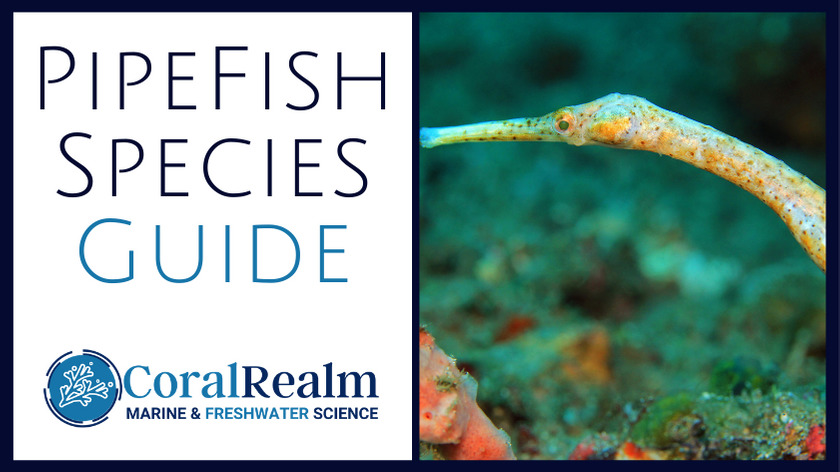
| Category | Pipefish states |
| Origin: | Indo-Pacific |
| Care Level: | Expert |
| Temperament: | Peaceful |
| Color Form: | Black, Red, White, Yellow and Stripes |
| Lifespan: | 5-10 Years |
| Max-Size: | Up to 7 inches |
| Diet: | Carnivore |
| Species: | Syngnathidae |
| Minimum Tank Size: | 50 Gallons |
| Habitat: | Mature Reef: Rocks, Caves and seagrass |
| Reef Compatible: | Depends on Species |
| Compatibility: | Other Pipefish, Seadragons, Seahorses, small Gobies |
| Water pH: | pH 8.1-8.4 |
| Water Hardness: | dKH 8-12 |
| Temperature: | 72-78° F |
IN THIS ARTICLE
The Pipefish Introduction | A Syngnathidae
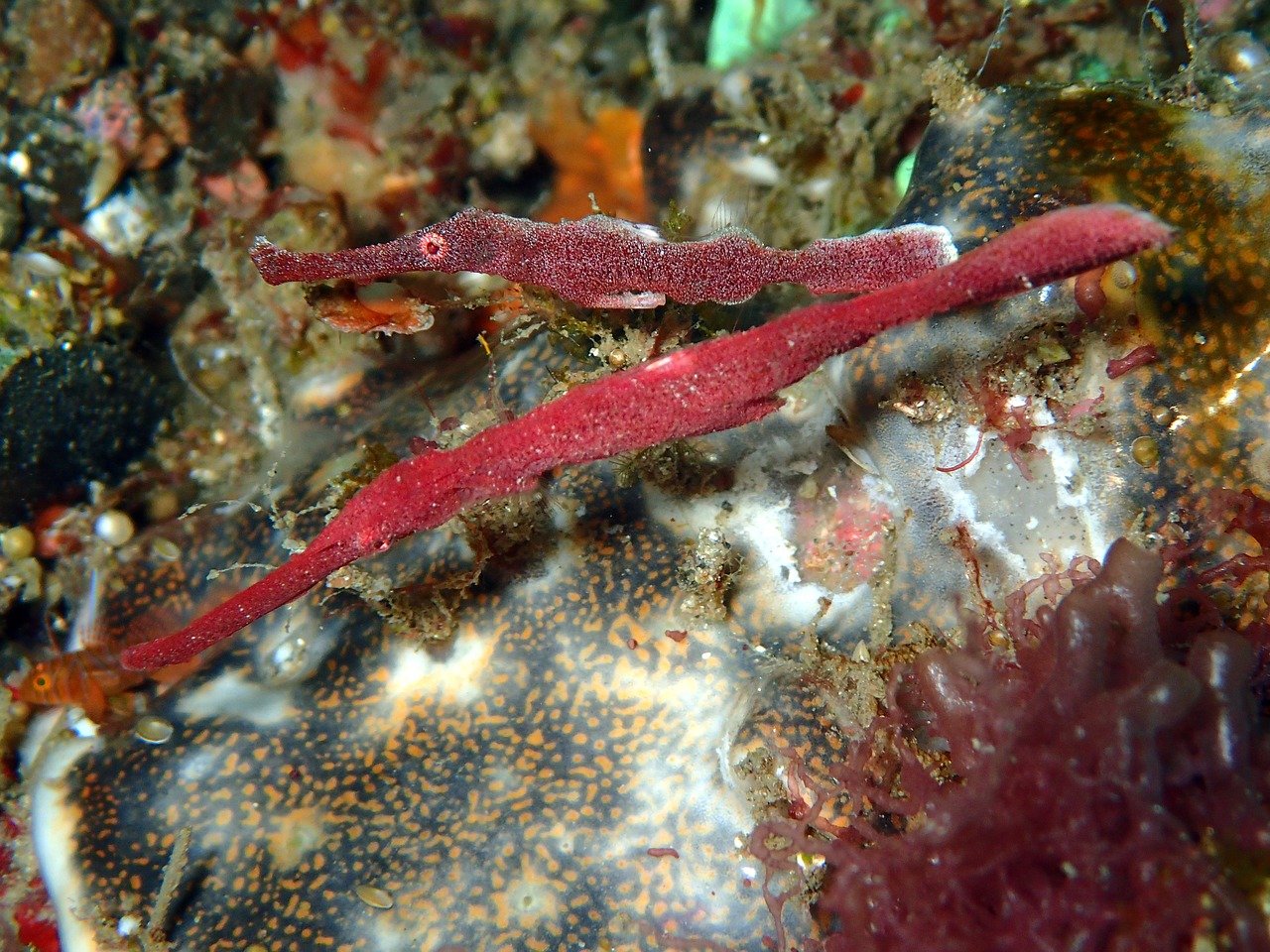
As we now know, Pipefish belong to the same family as seahorses, and their long slender snake like bodies had scientists previously reticent to label them in the family due to in part of their axial skeleton, which is more common with the morphology of regular saltwater fish. Extensive DNA testing revealed their direct correlation to the Syngathidae. They share many similarities to the sea horse, and for more information on the seahorse in an aquarium setting read our full guide to the seahorse.
For such a beautiful species, they are affordable to saltwater aquarists, costing approximately $20 USD per Pipefish. With that in mind, it’s easy to see why the Pipefish are popular compared to the much more expensive Seahorse cousin.
For the science buffs and biologists out there, remember that the pipefish is still a fish, and it’s spine and bones make it a part of the ray finned fish, or Actinopterygii {latin name}.
Appearance of the Pipefish
The distinctive look of the Pipefish always attract the gaze of passers by, almost eel like in their appearance, Pipefish has a similar shaped head and nose to the common seahorse. The long snout has its advantages too, able to suck in food in a biological vacuum (such as crustaceans) via the narrow toothless channel. It really is impressive!
The long slender body of the pipefish is ultimately what differentiates this sub-species from a seahorse. The straighter bodies make them more adaptive to hiding in their habitat, and they camouflage completely into the weeds and rocks of their environment. Given they are not swimming ‘straight up’ they are more athletic and nimble than the seahorse.
However, it’s a mistake to assume their strong swimmers, preferring calmer waters. While they may be used to getting through around in the ocean, it you have a powerful wave maker, or filtration system above water, be prepared to be distressed seeing them knocked about. They do move slowly, and using their small dorsal fin they would prefer to stick to slower currents if giving the choice; do not force them into choppy waters.
There are a few species of Pipefish that have what is known as a grasping tail (or prehensile) that is used to hold onto things in harsher currents, but many not not possess this. Of the 200 plus species that exist, only a few of them are lucky enough to have one.
Colors of Pipefish
The pipefish comes in several different colors. Ranging from red to blue, yellow, brown & even black Pipefish have been spotted.
Some have seen the pipefish change color to match its surroundings. This is primarily a defense mechanism.
Pipefish Habitat Overview
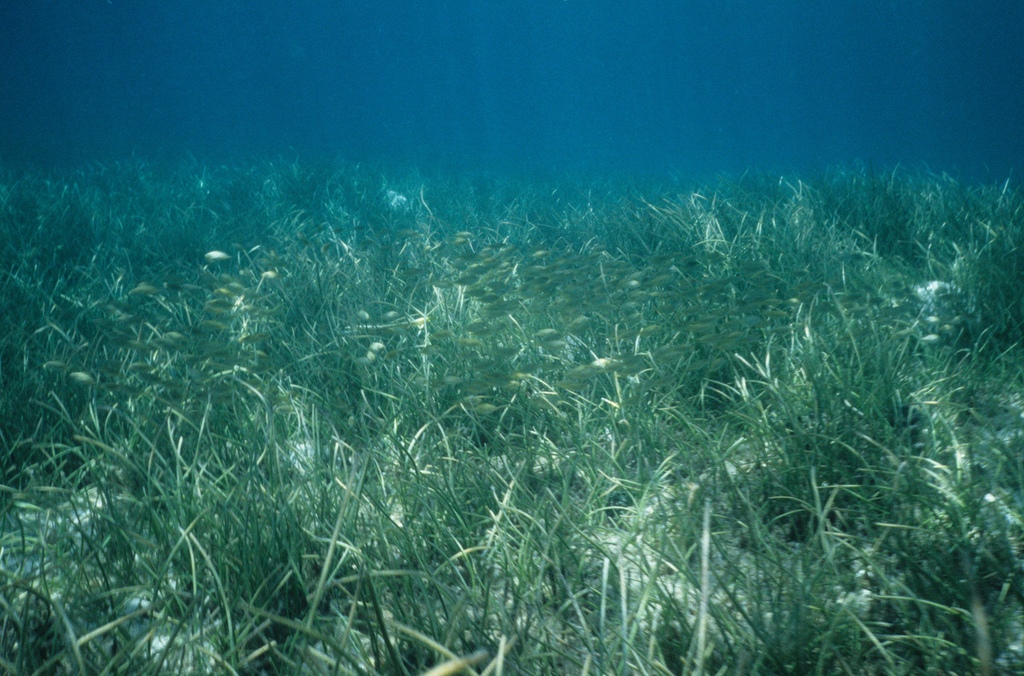
The vast majority of pipefish are native to subtropical salt water. There are some species that can be found living in tropical freshwaters, although these are usually closer to oceans and so remains a small % of salt, we might normally refer to this as brackish waters.
In their native wild habitat, Pipefish are found nestling in lagoons and the seagrass close by to coral reefs. The seagrass provides shelter and both camouflages the fish. Here they can stay safe and hunt for food and prey.
Some are found in open oceans however. It’s been known to see some types of pipefish at sea-depths of up to about 1,300 feet (400m). Additionally, some pipefishes live in close promixmity to other species of marine life; for example, the blue-striped pipefish (or Doryrhamphus excisus), is the one we’ve all seen in the wildlife documentaries swimming close to others and picking parasites off the backs of larger fish.
Threats to the Pipefish Habitat
Pipefish aren’t good swimmers. We know that to be a fact. They keep to calm shallow waters, and are easily disturbed by both currents and external impact (humans). They prefer warm, shallow calm water, often clear water due to the tropical nature of the sea temperature. But humans are also attracted to such locations, and stomping all over the delicate sea-grass is a direct threat.
The decrease in sea grass and eel grass, is of serious consequences. Along with boat damage, a declining coral reef structure and human runoff, pipefish habitat is under threat.
They are less available to easier adapt because there are very few places and there is limited environments on earth in which they thrive.
It’s for that reason that if you do buy Pipefish for aquarium purposes, you don’t keep wild caught and only use pipefish from a known petstore or breeder that breeds them in captivity.
Another thing that affects population is its use in Chinese medicine. However, this certainly doesn’t constitute a large market, and the Chinese are often respectful with regard to their use of alternative medicine (which works by the way).
Pipefish Aquarium/Fish Tank Requirements
Setting up the aquarium environment for pipefish is not always as easy as it seems.
Setting up a pipefish fish tank or a tank for seahorses is going to be challenging. You’ll need to devise a saltwater environment that contains copious amounts of seagrasses and bed rock.
Here’s a simple checklist below:
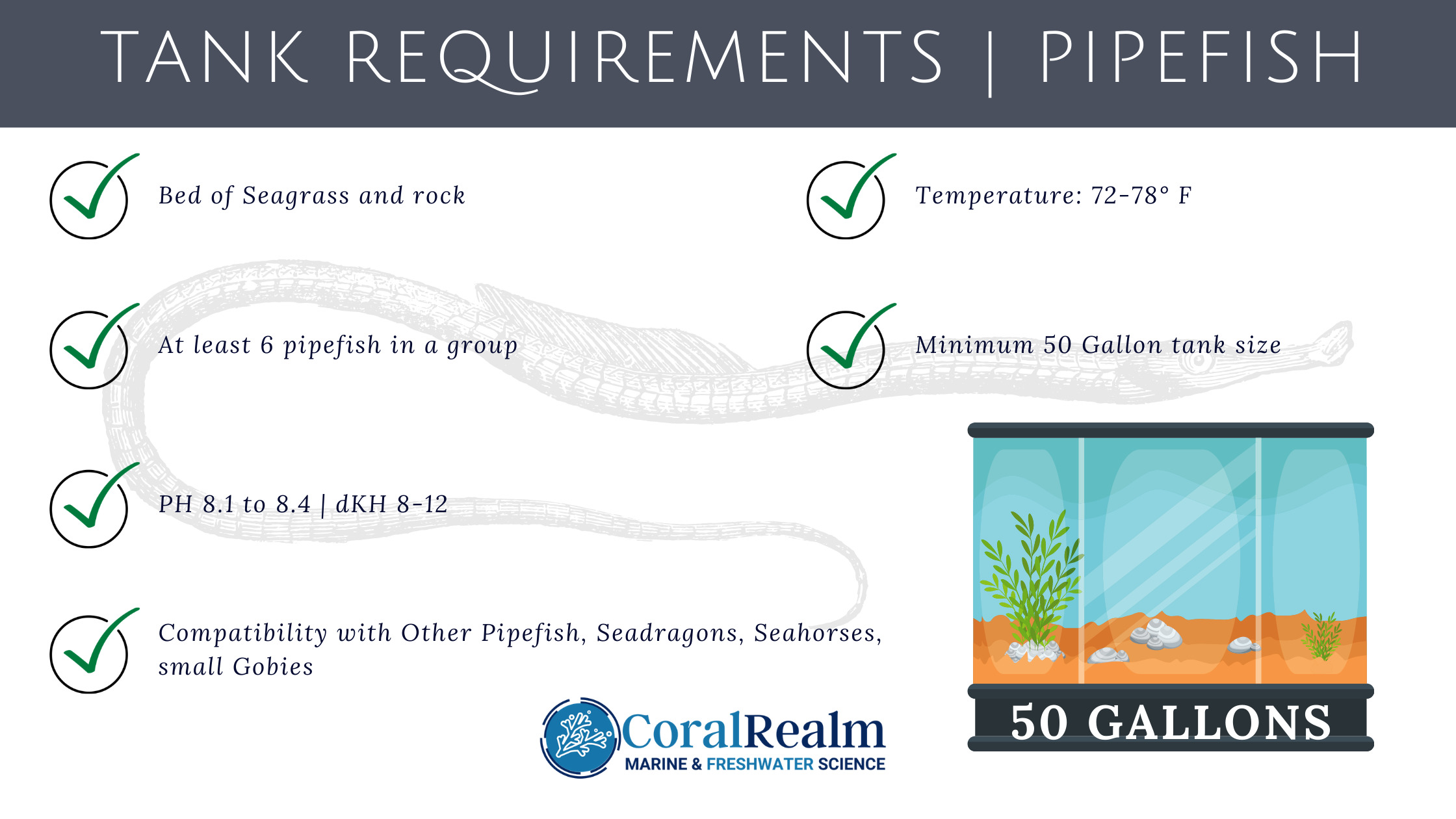
Don’t forget, pipefish are social creatures and must be kept in groups of 6 or more others. They do not want to be kept in large community coral tanks. You’ll need a great canister filtration system, and the best protein skimmer around to do the job for these guys.
The aquarium will need to be a minimum of 50 gallons, preferably larger; remember this is an open water ocean creature. As mentioned above, it may be kept with the following other species:
- Small Gobies
- Seahorses
- Dragonets
- Firefish
- Or, only other pipefish
Fast moving, and overly large or aggressive fish are generally not tolerated. Additionally, this fish has no immunity to stinging anemones or corals with stinging barbs of tentacles. They are also sometimes aggravated by crabs and large shrimp, however, in a large enough tank size this should not be an issue. Just remember even 50 gallons is small when you confine creatures to the same 50 gallon space.
I would include a nice set of LEDs in the tank, to provide the vibrant natural color found in the shallow reefs in which they normally inhabit. Adding rocks and seagrass not only replicates habitat and natural behavior, but also provides shade. Pipefish are daytime hunters, meaning that require visual light in order to find food and eat properly.
Water Hardness, pH and temperature
The fish originate in lush tropical waters, and so your tank should be set to between 72 and 77 degrees Fahrenheit, for their ideal health. Ensure a good quality aquarium heater and thermometer to ensure this range. pH balance is another important factor for these guys, and so the pH for pipefish should be between 8.1 and 8.4. Remember, regular pure water has a middle pH of 7, so Pipefish prefer mildly alkaline water.
Carbonate hardness (dKH) for the pipefish should be of 8-12 range and remember to keep the specific gravity of 1.020-1.025. If you have any questions on how to achieve this, let us know in the comments and we will absolutely help you!
Pipefish Behavior
Pipefish are docile, peace loving creatures. In the wild, they are found in groups; rarely alone. They are found relaxing in the warm waters of the seagrass beds, and sometimes align vertically with the grass to mimic their surroundings.
In general the study of their behavior has not lead to any new discoveries about the species, they are easily understood. Their hunt for food is obvious, as they scurry over the sea floor like a snake on land.
In the tank environment pipefish display less of this kind of behavior, typically because all fish are different when a food source is not as natural as in the wild.
To encourage their natural habitat, you can plant long vertical plants in your tank, and this combined with the essential seagrass will make them feel right at home and encourage the kind of instinctive behavior we see in the wild.
They transition very quickly from their vertical resting position and can suddenly bolt sideways to catch prey.
Care 101
If we’re being honest, Pipefish are indeed not an easy species to look after, and that is of extra importance for the beginner. This is not a beginner fish. However, don’t let that get you down, with the right equipment and time to learn, they can successfully be kept.
There are also other questions that arise here, there are many species of pipefish that we’ll cover later on, some of which are more suitable that others to keep in an aquarium environment.
Often, this fish will not do well when captured from the ocean. We do not advise this, nor encourage this activity.
When buying this species from a regulated store or dealer, you need to keep an eye out for a few crucial things:
- No bacterial infections, this can present as rarer fish diseases to more common white spot.
- Cloudy eyes or rotted fins.
- Slow, sluggish movements.
The Pipefish Diet
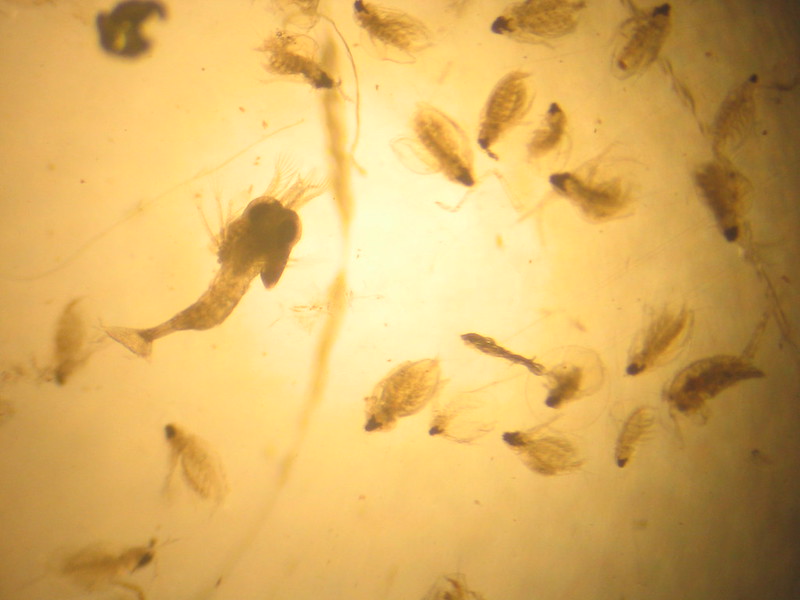
The pipefish diet is quite diverse for a creature that sticks to very specific oceanic regions. However, they are not feisty or aggressive fish, and so will not engage in competing for food, this is a reason why it’s so important to keep them in line with our pipefish tank-mate guidelines.
In the wild, as a carnivorous species, the fish has developed a special long snout, that is used primarily to suck in their food and prey. This is mostly plankton, crustaceans, and also includes small live foods. Small live foods can be anything from small shrimp, and copepods to the amphipods.
The fish found more upstream, in brackish water, will eat other insects found close to the waters edge, often worms, flies and small insects.
Scientists have studied the feeding behavior of pipe fish and their ability to eat food sources in both brackish, fresh and saltwater makes them an interesting addition in an artificial environment.
For introduction into an artificial tank, please establish it well, including the abundance of natural live rock & seagrasses.
Like all fishkeeping rules, they should be fed a variety of foods. It’s much harder to replicate the extreme diversity and opportunist nature of the fish in captivity, so if you can, stick to a variety of live foods for a well rounded diet. Do not use freshwater live food, and they lack the fatty acids and oils present in marine live food.
What to feed your Pipe fish:
Below is a list of what you can safely feed, and where to buy it.
TLDR: The pipefish prefers to primarily eat only live copepods. These are best fed in a reef aquarium that has matured with enough time to develop macro-algae, and live rock has also matured. The fish will also hunt the red bug copepod found on invested coral.
There is no perfect diet, however, in our opinion; the best thing to begin feeding the pipe fish are live Copepods and live baby brine shrimp, fully grown brine shrimp may be too large for some species.
Baby brine shrimp should NOT make up the majority of the diet for this fish. Over some period, you can begin to use frozen foods and they may tolerate it, like frozen CYCLOP-EEZE, Nutramar-Ova or small live Mysis.
It isn’t easy to figure out, pick 3 from the list below and watch and observe the behavior closely. Find what your species prefers the most, and go from there.
| Pipefish Feed | Overview |
| Amphipods | These malacostracan crustaceans will be naturally present in most reef tanks, and sometimes live within the filter pads. They are a beneficial addition to fish and corals alike. They breed every 7 days and you can even cultivate them yourself after the first introduction to the tank. |
| Baby Brine Shrimp | Brine shrimp has little nutritional value to pipefish, however, baby brine shrimp come with a yolk and therefore posses more nutrition. In addition, many sellers will enrich the brine shrimp with vitamins, making them post-process a good option. |
| Nutramar Ova | Simply put, Nutramar Ova is made from prawn eggs. These eggs are nutritious and are an ideal size for feeding corals and Pipe fish. Combine with a live feed if you choose this food. |
| Copepods | Many experts will agree that Copepods are the ideal food source for pipefish. If you want to culture these in the tank setting, you may find it difficult. However, depending on what type of coral you have, the red bugs that sometimes infest corals, are a species of copepods and pipefish will hunt and eat these. |
| Isopods | Isopods are great when you have a mixed seahorse and pipefish tank, both these creatures will readily eat and be happy feeding on live isopods. If you are feeding these, mix with another food source twice per day. |
| Mysis Shrimp | Mysis shrimp are a great live food source, remember to buy small mysis shrimp from a trusted retailer. |
| CYCLOP-EEZE | High in omegas, food pigments and there’s no smoke and mirrors; it’s just a freeze dried decapod. |
If you get a tank that’s the minimum size of 50 gallons, you will likely have to feed the fish more often than a larger tank that can cultivate its own food source to some extent, all fish regardless of species take nutrients and micro-nutrients and minerals from their surroundings.
Combining frozen, live, dried and more types of foods together, you can enrich the availability and prevent your pipefish from getting malnourished.
However, there are reports that some of these species refuse to take frozen food, so please test prior to assuming this will be the correct diet of choice.
Another note; live food doesn’t come cheap, and pipefish can live an average of 7 years in captivity, don’t go into this with half a wallet!
Author’s Feeding Tips: Feeding this species is only require once per day, if you have a community tank with seahorses and gobies, then you might find twice a day is needed. Some people suggest 3 times per day and you’re going to end up with a dirty tank. This is written by uneducated, untrained writers. Remember, we’re creating a live rock, seagrass environment here. We want to supplement the fishes natural ability to forage.
Pipefish Species – A brief Overview
Today, aquarist’s most popular species are the dragon face, the banded pipefish, and the flagtail.
Scientifically, we can divide the Flagtail into two sub-species {Dunckerocampus} and {Doryrhamphus}; both vibrant species.
In our study of the pipefish, see our research, we have noted that the smaller species tend to be of a more aggressive nature.
Flagtail pipefish Subspecies Overview
Here’s some of the subspecies of the fish, and their anatomical descriptions.
| Flagtail Pipefish Species | Overview |
| The Bluestripe Pipefish (or Doryrhamphus excisis) | The Bluestripe is without doubt the smaller of the species. At a length of around 3 inches, this species boasts a vibrant orange and blue striped body. The tail often varies in color. One of the hardiest pipefish, but with that said, we still suggest that only expert aquarists keep them. Their diet differs to some fish, normally preferring to eat only Cyclops, small Mysis, and Nutramar Ova. |
| The Janss Pipefish (or Doryrhamphus janssi) | The Janss Pipefish is a common reef pipefish. A strong swimmer, it won’t spent much time in the sand, preferring to swim in open water before returning to swimming in the seagrass. In the wild, the Janss’ Pipefish also swims under rocky overhangs close to live corals. It often will be found feeding on parasites and old tissues and skin from damsel fish and cardinal-fish. In captivity, it will often do this cleaning on other communal fish. |
| The Banded Pipefish (or Dunckerocampus dactyliophorus) | Noted for its prominent stripes, or ‘bands’, this is the most common species of pipefish, and often listed as its own subspecies; just because of it, we listed it as a subspecies in its own right. However this is not factually correct. These fish are popular because of their medium level or hardiness, their ability to eat many types of live food, and tendency to hunt the dreaded red coral bug. |
| The Yellow Banded or mutlibanded Pipefish (scientific name: Dunckerocampus pessuliferus) | The Yellow Multi-banded Pipefish is another popular and category of reef pipefish. A strong swimmer this fish swims close to the edges of coral reef beds. In its natural habitat it will be found weaving between the seagrasses. The body is bright yellow with darkish red rings that span the fish head to tail. The tail of this species is typically a vibrant red hue, with a white and yellow spot present in the middle. A medium sized pipefish, that reaches about 6.5 inches in length as an adult. |
Dragonface/Messmate Subspecies Overview
The dragonface or Messmate fish technically have been listed in some places as a different subspecies of pipefish. This is a tricky one to answer, they are all part of the Syngathidae family, but are categorized under the sub-family {Corythoichthys} because of their biofluorescence and regional location.
The South Pacific region Dragonface has been scientifically classified as Corythoichthys haematopterus, and the Western Pacific region as Corythoichthys intestinalis. The region is pretty much the only difference in classification. To further complicate matters, some scientists argue that a further 12 sub-species exist, again based on regional position of the fish.
The Corythoichthys subspecies are slightly slower, and poorer species that their biological cousins. Dragonface’s also use their tail to compensate for the poor swimming strength by gripping onto rock and substrate.
The Dragonface Pipefish is among the hardiest pipefish, but we still suggest expert only aquarist due to its unusual feeding requirements. It normally prefers to eat only live copepods in a mature reef aquarium with plenty of live rock or macroalgae. An ideal diet to start this fish on is Nutramar Tigrio Bottled Live Copepods, and vitamin-enriched live baby brine shrimp. However, live baby brine should not make up the majority of its diet. Over time, the Dragonface Pipefish may become accustomed to eating frozen Cyclops, small Mysis, and Nutramar Ova.
Compatibility with Other Fish | Pipefish tank Mates
So you want to keep pipefish with other species?
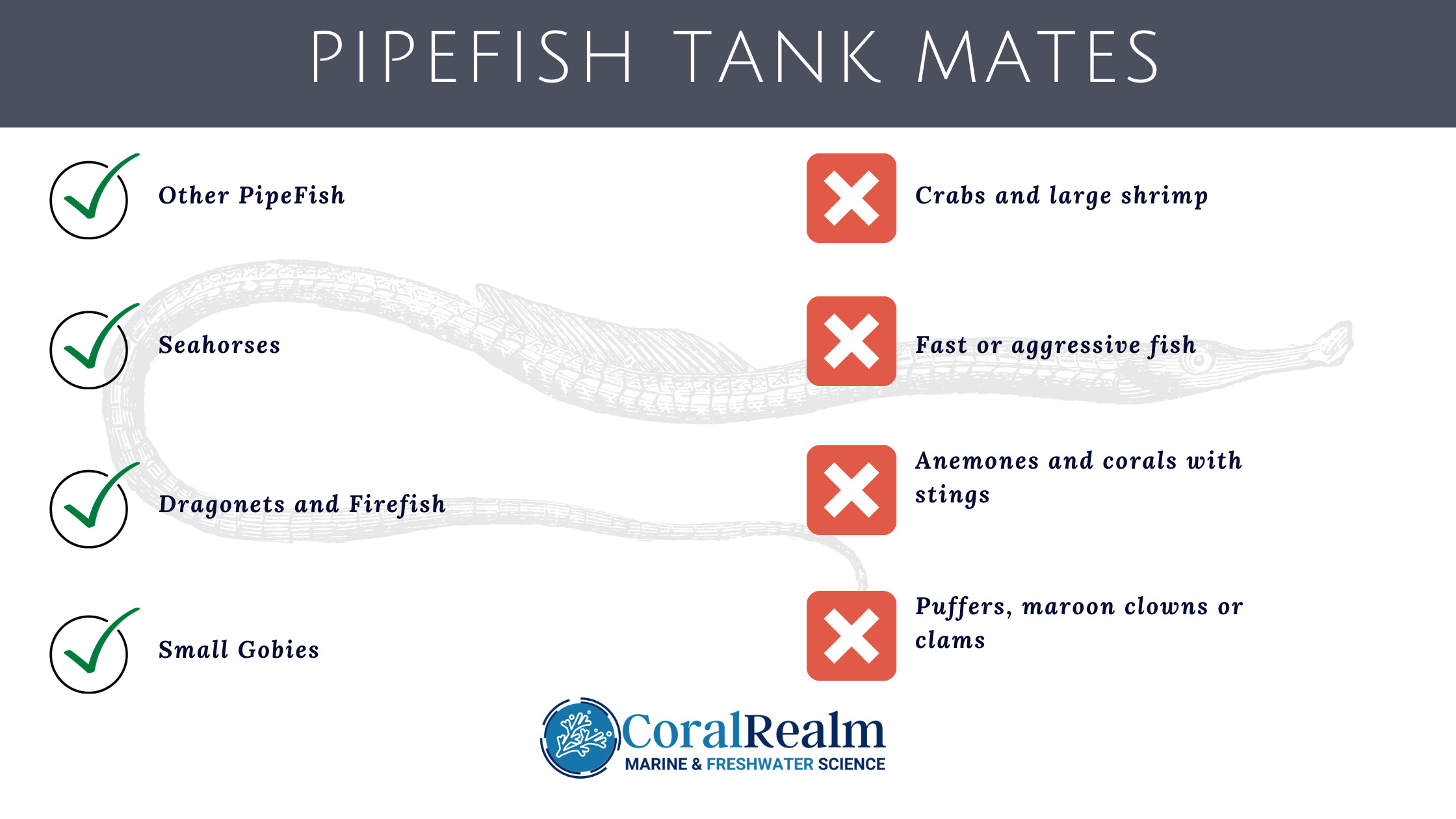
We’ve created a list of suitable species that you can include with pipefish:
- Small Marine Gobies
- Seahorses
- Dragonets
- Firefish
- Or, only other pipefish
Pipefish will not react well to fast aggressive fish, like blennies, wrasses, larger gobies (small gobies are ok) or tiger-fish. Exercise common sense.
Additionally, as should be already clear, you can push your like in a community tank but in no situation should they be kept with puffer fish, clown fish or large clams. Remember that in a community tank, fish do compete with each other for food.
Remember, the Pipefish requires a minimum of 50 gallons of water, the more fish you have, the larger the tank needs to be.
Breeding
Much like their seahorse cousin, the pipefish’s reproductive behavior is unique in the sense that it is not the female, but the male that will carry the fertilized eggs through their development to hatch. The eggs are generally carried in two places depending on the species; it will either be stuck underneath the main body in a spongy area, or held in a special brood pouch.
If you want to encourage breeding of pipefish, we advise you to keep them in a solo tank. No community tank of any kind! If you keep the mating pair well-fed, you will find they will regularly breed.
Different species of the fish may have accentuated versions of the brood pouch, it could be open folds or fully closing enclosures that are a literal cavity in the same way that a seahorse has a brooding cavity.
When these fish mate, a pair of them will progress through stages of breeding, swimming alongside one another quite quickly before the female will deposit her eggs.
A female selects her mate, and then deposits her eggs. However, this isn’t limited to one male; in order to guarantee the birth of offspring and secure a future, the female will do this multiple times with other fish.
As in most circumstances in the harshness of the ocean, offspring pipefish are left to survive on their own, immediately exposed to the elements and needing to look after themselves. Less than 5% of pipefish will reach adulthood.
Should you keep Pipe fish in your aquarium?
That really depends. We’ve managed to cover a wide range of topics from their habitat, their endangered status, their anatomy and even how to keep them in a fish tank if you’re so inclined.
If you do choose to keep pipefish in an aquarium setting, keep in mind the following things. Use this as a final checklist to decide if you can:
- Are you prepared to dedicate your tank for this species only and its select tank-mates?
- Are you prepared to invest a lot in creating a seagrass bed?
- Is your tank at least 50 gallons in size?
- Are you prepared to buy at least 7 pipefish?
- Are you willing to buy live feed for the duration that you have them?
- Can you use a filtration system that will not disrupt the calm nature of the fish?
You’ll need to be able to answer those questions honestly. Remember keeping fish can be a dangerous hobby, engage in sustainable fish keeping, buy local and buy farmed (not caught). As marine biologists the last thing we want to do is harm.
Please let us know in the comments how you keep these in your tank, what your experience has been, if you have any advice from others or just want to share what you’ve learned from studying them!
If you already keep pipefish, or are thinking of buying one, we’d love to hear from you below!

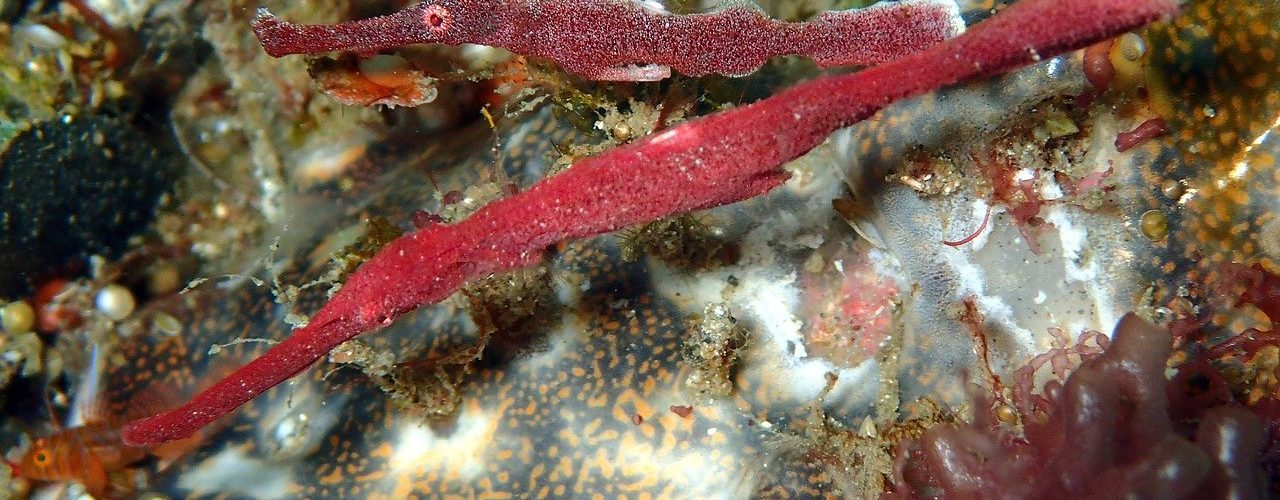

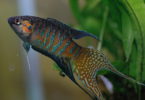
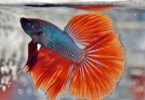
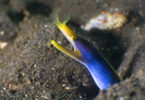
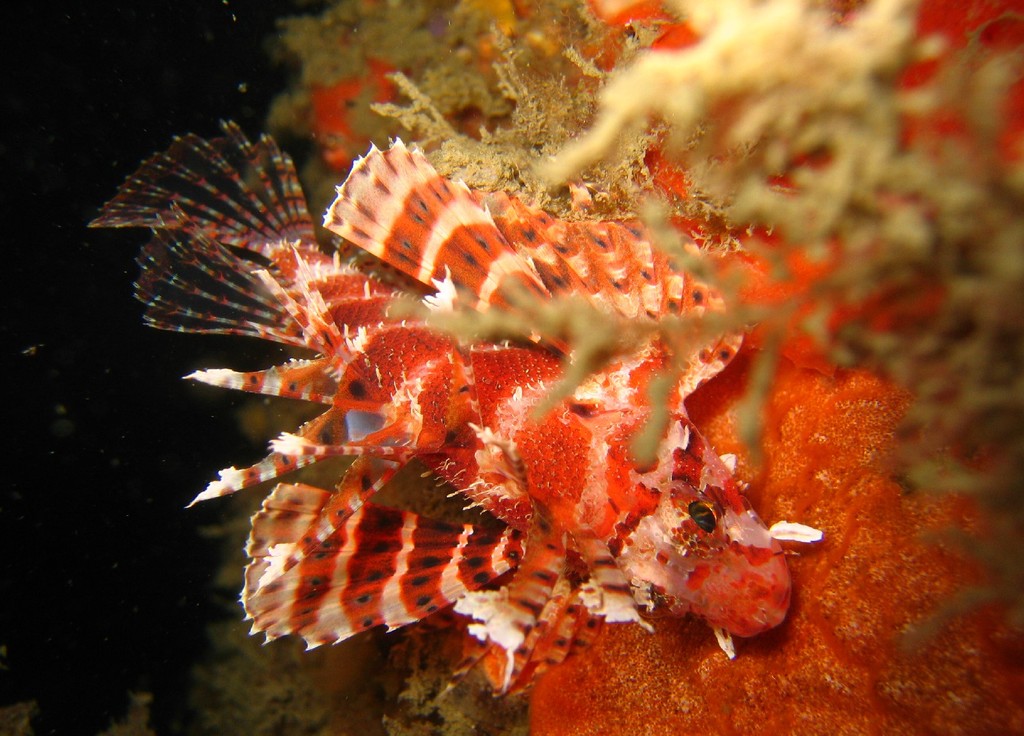
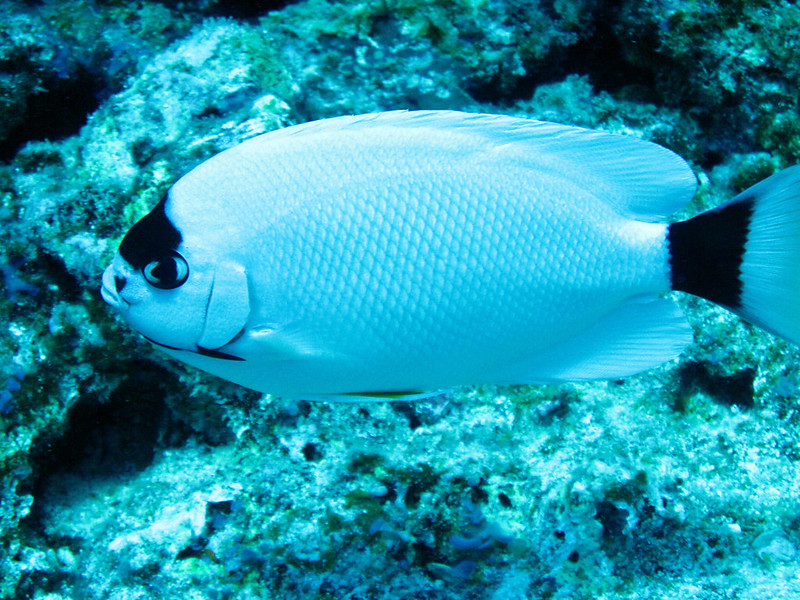
Matt,
loved the article about pipefish. one of my favorite creatures.
you’ve probably already gotten this comment, but this is the correct spelling of “reticent.” (as opposed to retesent)
Not trying to be picky but students and other people see it and may then also misspell it.